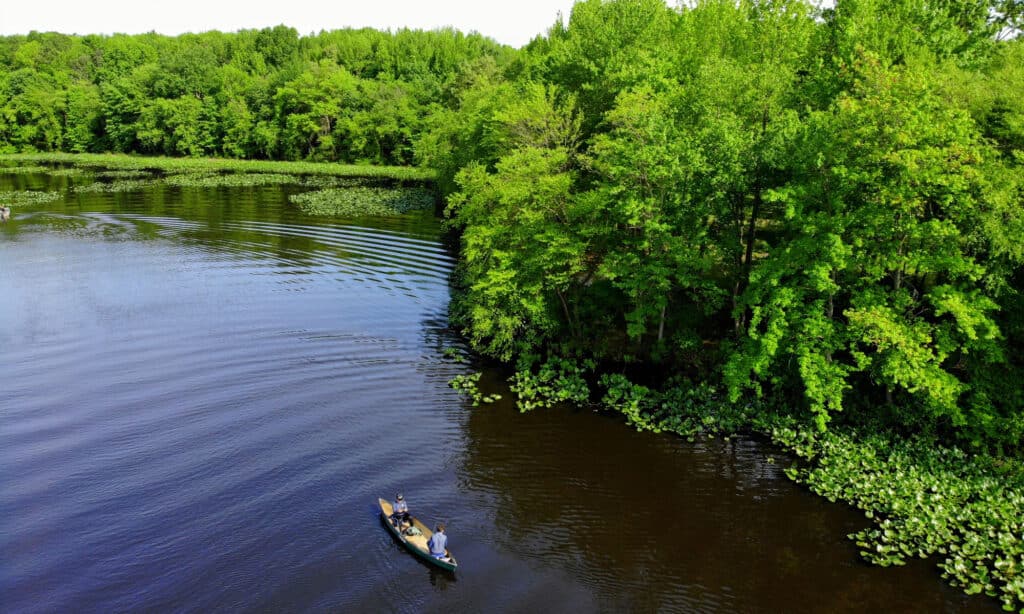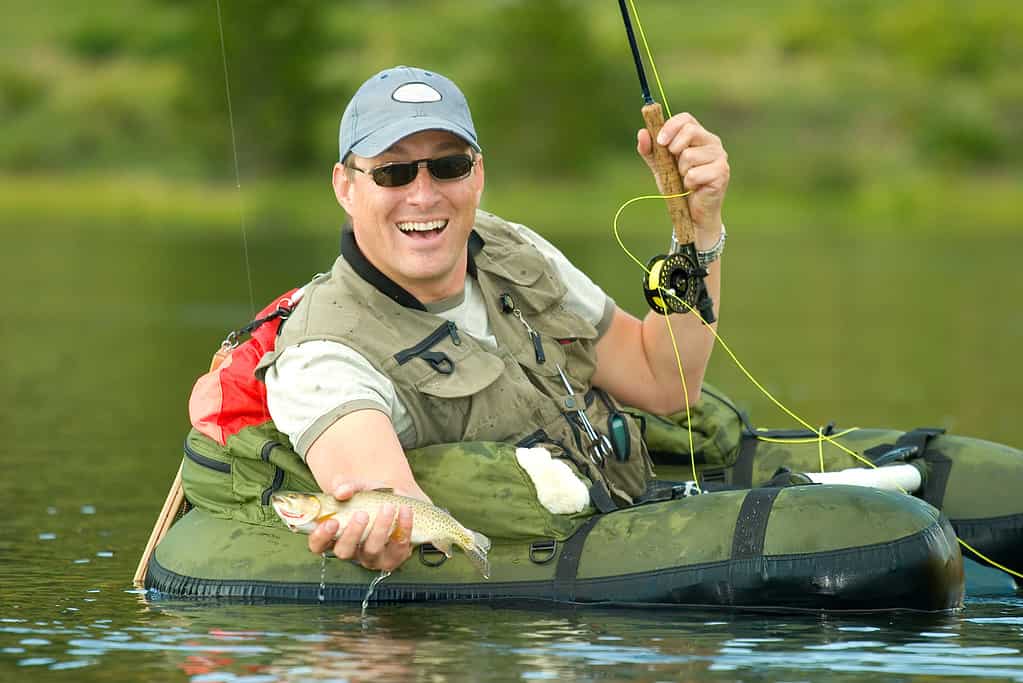Alligators in Tampa, Florida, can provide an unforgettable and thrilling outdoor experience. From crystal-clear springs to pristine rivers, there’s no better place to take a dip in nature’s aquatic playground than in Tampa.
Tampa is known for its beautiful coastline and waterways that stretch for miles. There’s no shortage of fun activities in the crystal clear waters.
The warm waters of the Gulf of Mexico make Tampa an ideal destination for swimming and fishing enthusiasts. Additionally, it’s the perfect place to rest and relax, thanks to the sunny beaches.
Despite the welcoming aura of Tampa’s irresistible waters, potential danger lurks beneath the surface — alligators. Tampa’s vast network of rivers, lakes, ponds, and oceans provides a haven for these predators.
Alligators can be dangerous, and visitors should be aware of the potential dangers when entering the water. This article will explore the risks of alligators in Tampa and explain what precautions you should follow when near water.
Where Can You Find Alligators in Tampa?
Alligators thrive in many habitats in Tampa. In addition, these creatures are apex predators, meaning they are at the top of the food chain and play a crucial role in maintaining the ecosystem. The following are common spots to encounter alligators:
1. Lakes
Alligators often sunbathe on the shore or swim in lakes such as Lettuce, Apopka, Carroll, and Sawgrass. They prey on various species, including fish, turtles, and birds. Furthermore, lakes serve as an ideal habitat for gators to breed and raise their young. They’re integral to the lake ecosystem and help maintain a healthy balance.
2. Rivers and Ponds
Tampa’s rivers and ponds are other habitats where alligators thrive. You can spot alligators as you travel down the Hillsborough River, Myakka River, and ponds like Palmer Pond and Victoria Terrace Pond.
Areas around rivers and ponds are usually surrounded by lush vegetation. This vegetation provides good places for gators to bask, hide and hunt.

Tampa’s rivers and ponds are other habitats where alligators thrive.
©iStock.com/Donna Derrick
3. Alligator Parks
Visit any of the numerous alligator parks in Tampa and see these animals in their natural habitat. Tampa’s alligator parks are committed to protecting and conserving the animals. They also educate visitors about the importance of conservation. Croc Encounters, Eureka Spring Park, Gadsen Park, Swamp Fever Airboat Adventures, and Largo Central Park Nature Preserve are some parks that can be visited.
4. Oceans
Although alligators are primarily freshwater animals, they sometimes move back and forth between freshwater and salty marine ecosystems to feed and rebalance their salt levels.
Gators can tolerate salt water for a few hours or even days. In the sea, they feed on fish, crustaceans, and other marine life and assume a fundamental part in keeping up with the sea’s fragile balance.
Can You Swim with Alligators?
The short answer is no. Swimming with alligators is never a good idea. Although alligators are not typically aggressive toward humans, they’re territorial and can become aggressive if they feel threatened.
Additionally, avoid moving near nesting female alligators since they’re very protective of their eggs and young ones. Moving near the offspring may make the female believe that her eggs or babies are in danger and decide to take defensive action.
Where Can You Swim Safely in Tampa?
While alligators are present in many water bodies in Tampa, certain natural lakes, swamps, rivers, and ponds are generally safe, considering they have no alligators. The City of Tampa Parks and Recreation Department has designated these swimming areas as alligator-free and safe for swimming.
These areas are usually guarded and monitored by park staff to ensure the safety of swimmers and adventurers. Also, the safe swimming spots always have lifeguards on duty, making them a good option for families with children.
Moreover, these areas are normally marked with signs and are safe for swimming and other activities. But if you’re unsure about the safety of your surrounding, it’s advisable to ask an available park ranger or local for advice.
Some of the most popular safe swimming areas in Tampa are:
- Ben T. Davis Beach
- Picnic Island Beach
- Davis Islands Beach
- Robert W. Saunders Sr. Public Library Pool
- Lake Magdalene
- Lake Carroll
It’s worth mentioning that alligators are common in some parts of the Hillsborough River. There are still safe areas for swimming. Rowlett Park and Lowry Park are two of the safest swimming areas in the river.

The surest way to avoid encounters with alligators is to steer clear of their habitat.
©Kristi Blokhin/Shutterstock.com
How to Avoid Alligator Encounters
Keep Your Distance
Never move near an alligator if you see one. While getting up close to these creatures is exciting, you must not forget that they are wild animals and can be extremely unpredictable. Always maintain a safe distance of at least 30 feet from any alligators. Also, if you spot one, move away slowly and calmly without scaring it.
Avoid Alligator Habitats
The surest way to avoid encounters with alligators is to steer clear of their habitat. Keep away from regions close to lakes, streams, and marshes that harbor the reptiles.
Alligators are most common in lakes or swampy areas, so if possible, avoid these areas altogether. If you must visit a lake or swamp, stick to designated areas, and watch your surroundings.
Don’t Swim at Night
Alligators are nighttime hunters. They become more active when the sun goes down. During these times, these fearsome hunters exploit their intense senses of sight, sound, and smell to find prey. The low light likewise assists them with staying stowed away, making it easier for them to trap their prey. Besides, the cooler temperatures around evening time make regulating their internal heat level simpler.
Hence, visiting regions that harbor gators around evening time endangers you from being attacked by the reptiles.
Be Cautious
If you’re close to gator-infested waterbodies, be cautious of your surroundings and stay away from the water’s edge. What’s more, if you’re climbing or strolling in bushy regions close to water, move chaotically to caution crocs of your presence and ward them away. You can alert them by talking, clapping, or using a bell or whistle.
Additionally, should you go fishing in waters inhabited by alligators, be extra cautious; some of them may grab a hooked fish or swallow the fish on a stringer, accidentally drawing you closer.

If you’re close to gator-infested waterbodies, be cautious of your surroundings and stay away from the water’s edge.
©Yordan Balabanov/Shutterstock.com
Do Not Swim Alone
If you want to swim in a space that may have an alligator, bring a friend along. Swimming alone can make you an easy target for the reptiles. Having someone with you can help you during an emergency and provide an extra set of eyes to watch out for any potential danger.
Do Not Feed Alligators
It isn’t just unlawful but also risky to feed gators. Feeding these reptiles conditions them to associate people with food, making them likely to move toward humans later. Giving food to gators can also be dangerous since they can become aggressive and assault if they feel undermined or unsatisfied with the amount of food you have given them.
Ensure you don’t feed the fish, ducks, turtles, or any other animal occupying the waters with gators. Besides training them to associate people with food, the food may attract the reptiles. Moreover, if you go fishing, avoid cleaning the fish in the water or leaving the bait or scraps on the ground. The leftovers can be a potential food source for gators.
Keep Pets On a Leash
If you have a pet with you, keep it on a leash and away from the water. A hungry alligator can mistake a pet for natural prey and attack.
Keep Off The Vegetation Along the Water’s Edge
Avoid walking on areas along the edge of the water with heavy vegetation. The reptiles like to sunbathe and ambush prey along the banks of water bodies, swamps, and marshes.

Alligators like to sunbathe and ambush prey along the banks of water bodies, swamps, and marshes so stay clear of these areas.
©Khairil Azhar Junos/Shutterstock.com
What to Do if You Encounter an Alligator?
Keep your distance if you see an alligator. The American alligator is very shy and usually avoids human contact. Nevertheless, gators can be aggressive if threatened.
Should you see a gator ashore, remain no less than 30 feet away and refrain from getting close to it. Likewise, don’t make clamors or noises that could unnerve the reptile. Similarly, don’t swim close to it if you see a crocodile submerged, regardless of whether the gator seems tame. Don’t try to frighten them in any way.
If you encounter a moving gator, move away calmly and silently and let it pass. American alligators like to move during mating season, spring and summer, in search of mates and breeding grounds. During this time, they are more active, aggressive, and likely to attack.
If you find yourself in a close fight with a gator, don’t hesitate to retaliate as hard as you possibly can. Use any weapon you can find to fight back, like a stick or a stone. Also, try throwing a fast jab or kick to its snout, which is the most sensitive area on the American alligator’s body. Inflicting pain on the snout area will confuse and disorient the creature and allow you to escape. However, be careful not to get too near the reptile’s mouth, as it can bite you.
Things to Do in the Waters of Tampa
Tampa offers plenty of water fun options for tourists as well as locals. The clear waters, natural rocks, surrounding vegetation, and available recreational activities make Tampa a place of solace and rejuvenation.
In addition, the tourism and hotel industries around the water bodies also attract visitors from several parts of the world. Visitors and locals alike can enjoy a variety of water experiences in Tampa, including:
Swimming
Tampa has several public beaches where you can swim. Tampa’s most popular beaches are Clearwater Beach, St. Pete, and Honeymoon Island State Park. Furthermore, these lakes’ shores offer various amenities, including restrooms, showers, and umbrellas for lease.
Besides beaches, Tampa also has many lakes that are ideal for swimming. Some of the more famous lakes include Lake Magdalene, Lake Carroll, and Lake Thonotosassa. These pools offer a more tranquil swimming experience, away from the clamoring crowds on the beaches. The calm waters and serene surroundings make it ideal for families and those looking for a more relaxed experience.
Fishing
The Tampa Bay area is known for its excellent fishing opportunities, where you can catch various fish, including catfish, rockfish, tarpon, and grouper. You can fish alone or enlist an expert local angler to take you to the best fishing spots nearby.

Spend some time outdoors and enjoy one of many activities available in Florida.
©iStock.com/scottdharris
Sunbathing
From Clearwater Ocean Beach to St. Pete Ocean Beach, there’s no shortage of choices for people who love to sunbathe. The white sand sea shores and crystal-clear waters are ideally suited for swimming, sunbathing, and unwinding.
Kayaking
Kayaking is one of the most popular ways to explore Tampa’s beautiful coastline while exercising. You can rent kayaks and enjoy rides like Adventure Island, Lettuce Lake Park, and Hillsborough River State Park. Kayaking to nearby islands and mangrove tunnels is one of the most popular activities among kayakers.
Water Sports
If you’re a thrill enthusiast, you can engage in water sports. Tampa offers a variety of water sports, including jet skiing, paragliding, and windsurfing. These activities will give you the ultimate thrill while enjoying the beautiful waters of Tampa. These water activities are also a great way to stay healthy and enjoy the great outdoors.
Always Stay Safe
Going into the waters in Tampa is a great way to enjoy the warm weather and beautiful scenery of the sunshine state. Even so, Tampa’s waters are home to a large population of alligators. Alligators are dangerous creatures that you should avoid whenever possible. And this alligator population is a serious concern for visitors and residents alike.
Reported alligator attacks in Tampa Bay have been very minimal. However, it is good to exercise caution in and around water. Alligators can be found in the rivers, lakes, and coves across the Bay. Staying cautious, out of the water at night, and avoiding areas near river mouths and coves are all imperative. Above all, using common sense and being aware of potential dangers is a good idea.
These tips should allow you to enjoy Tampa’s fun water activities without endangering yourself. Remember that gators are wild creatures and should be treated with caution. Stay safe and have some good times exploring the Sunshine State!
The photo featured at the top of this post is © Tande/Shutterstock.com
Thank you for reading! Have some feedback for us? Contact the AZ Animals editorial team.






